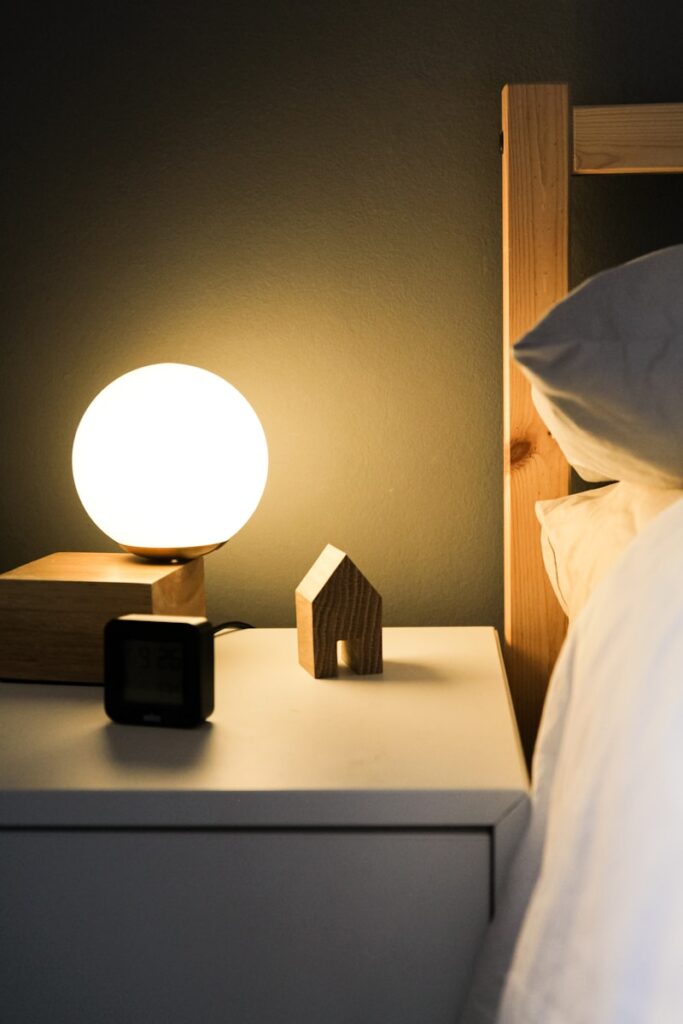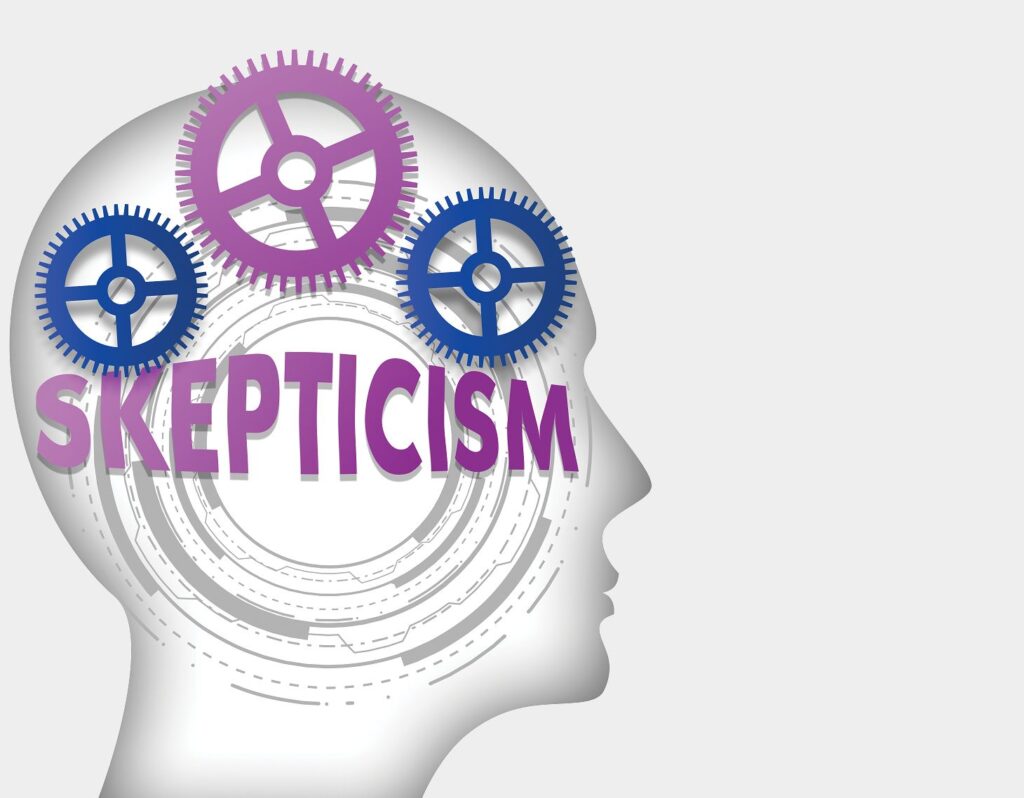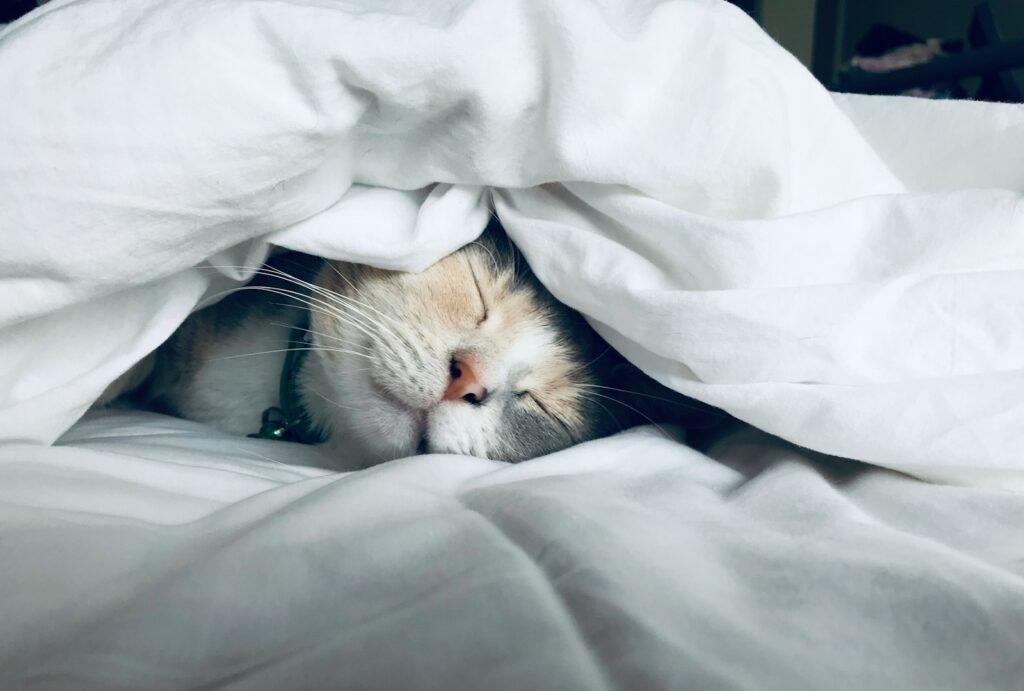
In our fast-paced world, many people tirelessly seek the next performance hack, quick fix, supplement, or trend in their pursuit of high performance, well-being, and success. Often, this quest leads us to overlook the most fundamental element that underpins all these aspirations: consistent, high-quality sleep. The truth is, when we consider the secret ingredient to optimal performance, well-being, and success, it unequivocally begins with restorative sleep. We are frequently stepping over hundred-dollar bills to pick up pennies by neglecting this foundational aspect of health.
Sleep is far more than just a period of inactivity; it is a profoundly fundamental biological process essential for our overall health. During sleep, our brain actively clears out toxins, repairs the body, consolidates memory, processes emotions, and restores vital energy. Despite these critical functions, a significant portion of the population remains chronically under-rested. Factors such as elevated stress levels, the ubiquitous late-night scrolling on digital devices, and the blurred boundaries between work and personal rest can severely disrupt the body’s natural ability to wind down and achieve deep slumber. When we fail to sleep well, nearly every other aspect of our lives suffers, impacting our capacity to focus, regulate emotions, make sound decisions, and maintain productivity.
It’s tempting to constantly chase external solutions, but the profound difference often lies in simply dialing in the basics and consistently aiming for a solid eight hours of sleep each night. A helpful framework for approaching your daily life is the 8x8x8 model, which divides the 24 hours into three equal 8-hour blocks: 8 hours for high performance (dedicated to work, productivity, and responsibilities), 8 hours for personal time (encompassing leisure, connection, and joy), and 8 hours for crucial rest and recovery, primarily sleep. For many individuals, the demands of work frequently spill over, extending to 10, 12, or even 14 hours daily. When this imbalance occurs, sleep and personal time are the first casualties, often being squeezed out, which inevitably impacts our well-being and long-term ability to sustain performance. While these blocks don’t necessarily have to be consecutive and can be arranged to suit your lifestyle, ensuring dedicated space for all three is absolutely essential for feeling well, and for showing up well-rested and regulated in every aspect of your life. This article will guide you through 12 simple, actionable steps that can dramatically improve your sleep quality.
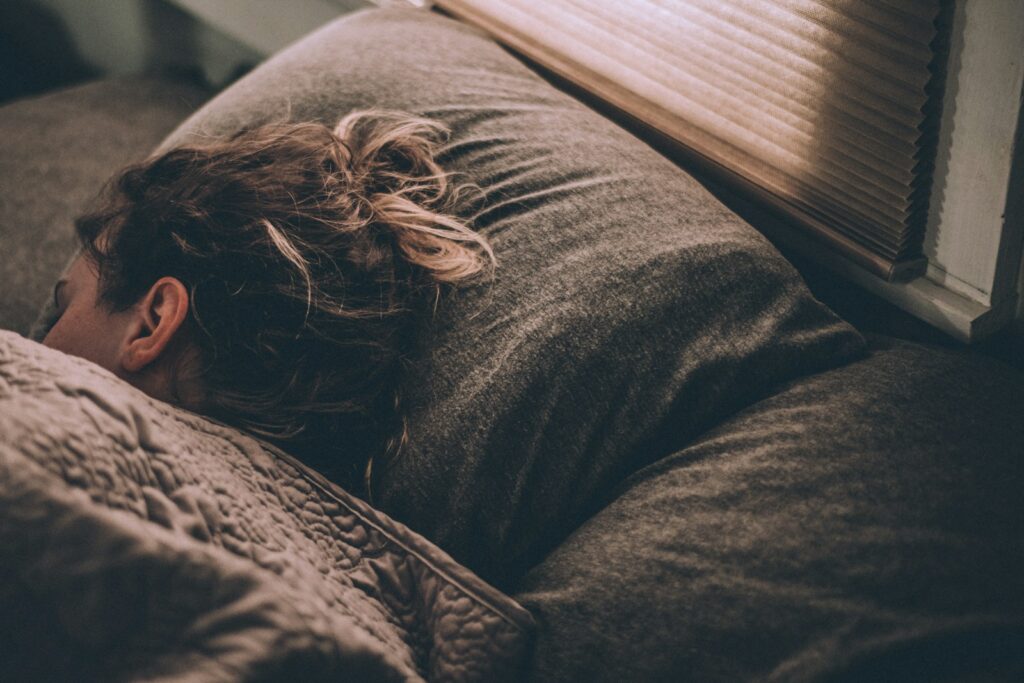
1. **Nap Wisely**Napping often carries a stigma in our productivity-driven society, sometimes being perceived as a sign of laziness or weakness. However, when approached strategically, napping can be an incredibly powerful tool for enhancing mental clarity, reducing fatigue, and boosting overall performance. It’s not about making up for chronic sleep debt, but rather about leveraging short, focused periods of rest to refresh your mind and body during the day.
There are two primary types of naps that can be used to your advantage, each offering distinct benefits. The first is the highly effective 20-minute power nap. This brief restorative period can provide a surprisingly high return on investment, acting as a quick reset button for your brain. It’s just enough time to significantly reduce fatigue, clear away persistent brain fog, and boost mental clarity, leaving you feeling more productive, alert, and focused for the remainder of the day. Taking this type of nap in the early to mid-afternoon, when your energy naturally tends to dip, is especially effective and is unlikely to interfere with your nighttime sleep patterns.
The second type, the 90-minute heart nap, offers a deeper level of restoration. This longer nap allows your body to complete a full sleep cycle, which includes all stages of non-REM and REM sleep. It can be profoundly powerful when you’re feeling the weight of the world, emotionally depleted, or simply need a more substantial reboot. A 90-minute nap is known for its ability to restore significant energy and even increase feelings of empathy and compassion, making it a valuable tool for emotional and cognitive replenishment.
Incorporating wise napping into your routine means understanding your body’s needs and using these short rest periods judiciously. Strategic naps can complement your nighttime sleep by enhancing alertness and performance throughout the day, without disrupting your nocturnal rest. Remember, the goal is not to replace a full night’s sleep, but to strategically augment your energy and focus when needed, leading to improved daily functioning and overall well-being.
Read more about: Unpacking the AI Revolution: 15 Must-Know Facts About ChatGPT’s Evolution and Impact
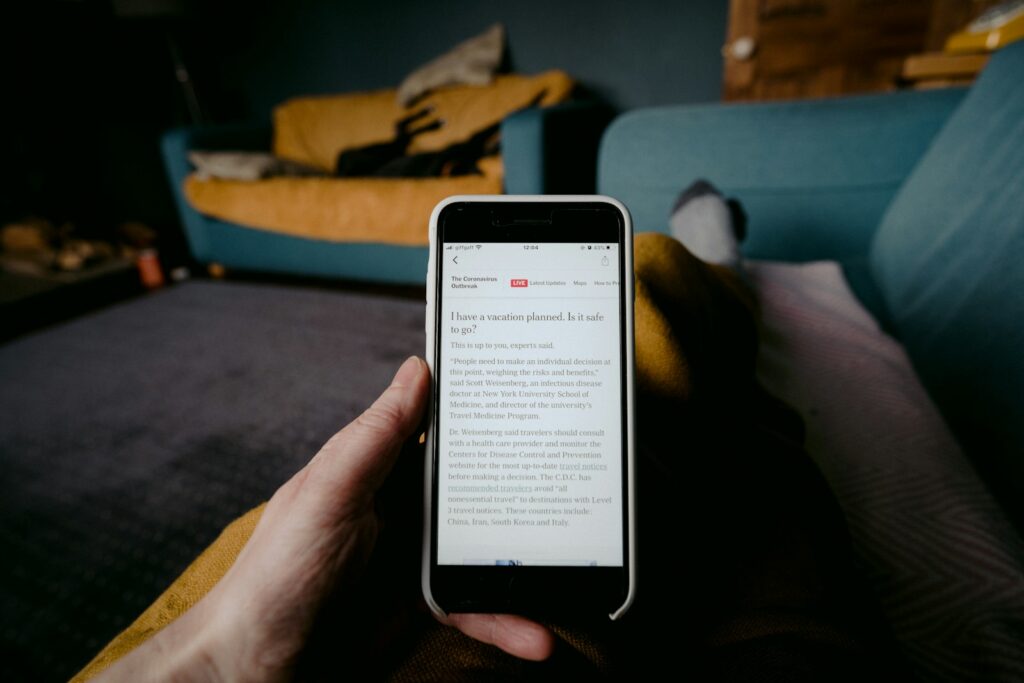
2. **Leave Your Phone Outside of the Room at Bedtime**In our increasingly connected world, the smartphone has become an almost indispensable extension of ourselves, often accompanying us right into the bedroom. However, keeping your phone within arm’s reach at night can paradoxically make it far more difficult to relax, truly wind down, and ultimately fall asleep. The constant potential for emails, notifications, and the endless allure of social media scrolling keeps your brain stimulated and alert precisely when it needs to be transitioning into a state of calm and rest.
The detrimental effects of nightly screen exposure are well-documented. Research consistently shows that the blue light emitted from smartphone screens and other electronic devices can significantly delay the release of melatonin, a crucial hormone that signals to the body that it’s time to prepare for sleep. This unnatural light exposure not only increases alertness but also actively disrupts your natural circadian rhythm, your body’s internal sleep-wake cycle. The consequence is often later bedtimes, shorter total sleep duration, and more restless, fragmented sleep throughout the night.
To reclaim your peace and foster a truly conducive sleep environment, it’s highly recommended to replace your phone with a simple, non-digital alarm clock in the bedroom. This small change can make a monumental difference in allowing your mind to disconnect from the digital world and embrace the quietude necessary for sleep. If you find yourself worried about having a fleeting thought or an idea in the middle of the night, keep a traditional notepad and pen nearby. This allows you to jot down any thoughts without the dangerous temptation of picking up your phone and getting drawn back into its stimulating glow.
By consciously creating a boundary and protecting your bedroom as a dedicated sanctuary for rest, free from digital distractions, you empower your body and mind to naturally prepare for sleep. This simple yet profound habit can significantly improve your ability to relax, fall asleep more easily, and achieve the deep, restorative rest you need for optimal health and daily functioning.
Read more about: 14 Simple, Science-Backed Strategies for Deeper Sleep Without Relying on Pills

3. **Follow the 3-2-1 Rule to Wind Down**Creating a clear and consistent wind-down routine is crucial for signaling to your body and mind that it’s time to transition from the day’s activities to restful sleep. The 3-2-1 rule offers a simple yet highly effective framework to guide this crucial pre-sleep period, helping you gradually prepare for a night of deep and restorative slumber.
Begin with the ‘3 hours before bed’ guideline. During this critical window, it is essential to avoid heavy meals, caffeine, and alcohol. Heavy meals too close to bedtime can lead to indigestion and discomfort, disrupting your sleep. Caffeine, known for its stimulating effects, has a half-life of six to eight hours, meaning if you drink coffee at 4 p.m., a significant amount will still be circulating in your system by 4 a.m., hindering your ability to fall and stay asleep. Similarly, while alcohol might initially make you feel drowsy, it ultimately suppresses REM sleep and causes sleep disruptions later in the night, worsening overall sleep quality.
The next step is ‘2 hours before bed’: this is the time to intentionally stop intense intellectual and emotional brain work. This means putting a halt to answering work emails, engaging in difficult conversations, or tackling complex problem-solving tasks. The goal here is to give your mind a chance to disengage from high-stress or highly stimulating activities. By allowing your cognitive and emotional systems to calm down, you prevent a racing mind from keeping you awake once you lie down.
Finally, the ‘1 hour before bed’ rule emphasizes minimizing screen time and exposure to blue light. As discussed, the blue light emitted from electronic devices signals wakefulness to your brain, interfering with melatonin production. This hour should be dedicated to more passive, relaxing activities that don’t involve bright screens. By consistently following this structured approach, you provide your body and mind with a clear, gentle path toward sleep, significantly improving your chances of achieving a peaceful and undisturbed night of rest.
Read more about: Unlocking the Secrets of Nine: 12 Mind-Blowing Facts You Won’t Believe About This Magical Number!

4. **Create a Personalized Bedtime Ritual**A consistent bedtime routine acts as a gentle, yet powerful, signal to your mind and body, indicating that it’s time to shift gears from the day’s activities to a state of calm and preparation for sleep. This ritual doesn’t need to be elaborate or time-consuming; its power lies in its regularity and the calming associations it builds over time. By engaging in the same series of soothing activities each night, you effectively condition your internal clock, making the transition to sleep smoother and more natural.
Your bedtime ritual can be deeply personal, tailored to what truly helps you unwind. Common elements that many find effective include dimming the lights around your home to reduce stimulation and encourage melatonin production. You might also consider “closing down” the kitchen by tidying up, which can create a sense of completion for the day. Engaging in quiet activities such as journaling, where you can offload thoughts and reflections, or reading a physical book (avoiding backlit screens) can also be profoundly relaxing, diverting your mind from daily stressors.
Sticking to your personalized routine is a powerful investment in your sleep health, yielding significant returns. It helps you not only fall asleep more easily but also achieve deeper, more restorative sleep throughout the night. The cumulative effect of these consistent habits is waking up feeling more rested, grounded, and genuinely ready to face the day ahead with renewed energy and focus. This intentional winding-down period is not a luxury; it is a fundamental component of optimal sleep hygiene that empowers your body and mind to truly relax and rejuvenate.
Read more about: Leveling Up After 50: 12 Habits and Foods Women Should Thoughtfully Consider Skipping for a Healthier, More Vibrant Life
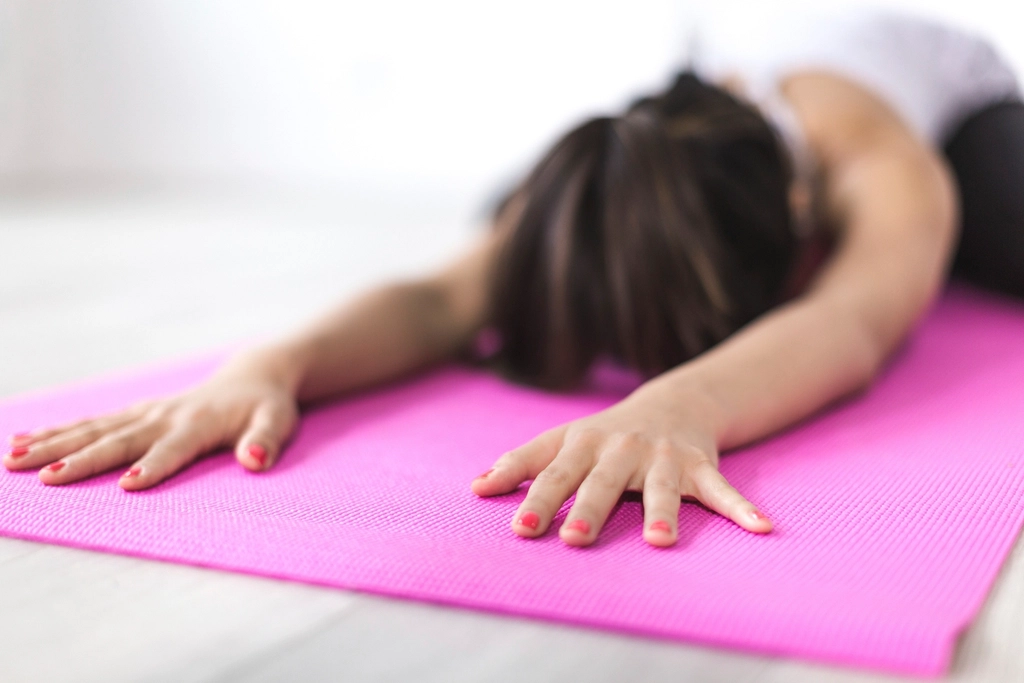
5. **Practice Progressive Muscle Relaxation**When stress and anxiety make it difficult to quiet your mind and body for sleep, progressive muscle relaxation (PMR) offers a straightforward yet highly effective solution. This technique is designed to help you consciously shift your awareness from intrusive thoughts and worries, grounding you squarely in your physical sensations. It’s a deliberate exercise that allows you to methodically release tension, which often accumulates unknowingly throughout the day, particularly in response to stress.
PMR involves systematically tensing and then releasing each major muscle group in your body. You can begin from your toes and work your way up to your head, or vice versa, moving through areas like your feet, calves, thighs, glutes, abdomen, arms, hands, shoulders, neck, and face. For each muscle group, you typically tense it firmly for about five seconds, noticing the sensation of tightness, and then completely relax it for 10 to 30 seconds, focusing on the feeling of release and profound relaxation. The contrast between tension and relaxation is key to its effectiveness.
The benefits of incorporating PMR into your nightly routine extend beyond mere physical loosening. This practice is exceptionally helpful in easing overall stress and calming the nervous system, which is often overactive when sleep is elusive. By systematically engaging your muscles, you create a powerful mind-body connection that relaxes you both physically and mentally. This focused attention on bodily sensations interrupts the cycle of anxious thoughts, making it easier for your mind to quiet down and for sleep to naturally take over.
Progressive muscle relaxation is a practical and accessible tool, requiring no special equipment, that you can use nightly to prepare your body and mind for restorative sleep. It’s a proactive step towards reducing physical and mental tension, paving the way for a more peaceful and undisturbed night.
Read more about: Unlock Your Potential: 15 Science-Backed Strategies to Shatter Workout Plateaus and Ignite New Gains

6. **Use Counting Backwards to Quiet a Racing Mind**One of the most common obstacles to falling asleep is a mind that simply won’t stop racing. Whether it’s replaying the day’s events, worrying about tomorrow’s challenges, or just an incessant stream of random thoughts, an overactive brain can keep you wide awake for hours. When your thoughts are swirling and sleep feels out of reach, a deceptively simple yet highly effective technique is to engage your mind with a mild, repetitive cognitive task: counting backwards.
The exercise is straightforward: begin counting backwards from a thousand, or any high number, one digit at a time. The beauty of this simple exercise lies in its ability to give your brain just enough to focus on, without being overly stimulating. It acts as a gentle redirect for the cognitive energy that would otherwise be consumed by anxious, repetitive, or unhelpful thoughts. By concentrating on this rhythmic numerical progression, you subtly disengage from the mental chatter that often prevents sleep.
This technique doesn’t demand intense concentration or emotional investment, which is precisely why it works so well for sleep induction. The act of counting backwards from a high number occupies the brain sufficiently to prevent it from latching onto other, more stimulating thoughts. This mild cognitive task allows your internal monologue to quieten down, creating a mental space where relaxation can take root and sleep can gradually begin to take over. It’s a gentle mental lullaby that guides your brain away from wakefulness and towards slumber.
By providing your brain with a low-stakes, repetitive task, you effectively prevent it from spinning out of control with worries or distractions. This method is a practical way to calm the nervous system and redirect your attention, making it an invaluable tool for anyone who struggles with a racing mind when trying to fall asleep. It empowers you to take control of your thoughts and gently usher yourself into a state of rest.
Having established a robust foundation with personal wind-down techniques, we now turn our attention to broader daily habits and environmental optimizations that significantly contribute to a peaceful night’s sleep. The journey to superior sleep quality extends beyond the hours just before bed, integrating seamlessly into how we navigate our entire day and the sanctuary we create for rest.
Read more about: Unlock Your Best Rest: Oprah Winfrey and Expert Secrets for a Full Night’s Sleep

7. **Honour Your Body’s Wake-Up Signals**Many of us are programmed to hit the snooze button, often in a semi-conscious attempt to squeeze a few more minutes of rest. However, if you find yourself naturally waking up within 90 minutes of your alarm, resisting the urge to fall back asleep can actually be beneficial for your morning alertness. Going back to sleep in this scenario might push you back into a deep sleep stage, causing you to wake up mid-cycle and experience a persistent grogginess that can linger throughout the day.
Understanding the structure of sleep cycles is key here. A complete sleep cycle typically lasts between 90 to 110 minutes, encompassing different stages of non-REM and REM sleep. Waking up during a lighter stage of sleep, which often happens when you naturally stir close to your alarm, can leave you feeling more refreshed than being abruptly pulled from a deep sleep phase.
By honoring these natural wake-up signals, you prevent your body from re-entering a new sleep cycle that will likely be interrupted. This simple practice helps maintain the integrity of your sleep stages, reducing the likelihood of waking up disoriented and fostering a more energized start to your day. It’s about working with your body’s natural rhythms, not against them, for sustained wakefulness and clarity.
8. **Get Outside First Thing After Waking**How you initiate your day plays a significant role in setting the stage for optimal sleep later that night. One of the most powerful and often overlooked habits is to get outside and expose yourself to natural light first thing after waking. This immediate exposure sends a crucial signal to your body’s internal clock, your circadian rhythm, helping to regulate its natural sleep-wake cycle.
Natural light exposure is a potent signal for your brain that it’s “go time.” It helps to effectively shut down the release of melatonin, the hormone responsible for promoting sleep, which can still be circulating in your system after a night’s rest. As clinical psychologist Michael Breus explains, “‘Most brain fog in the morning is caused by continued melatonin production.’ When sunlight hits your eye, it sends a signal to your brain to tell the melatonin faucet to turn off.” This boost in alertness and energy is essential for day-time functioning.
Beyond simply feeling more awake, this morning light exposure also reinforces to your body when it’s time to power down for rest. By consistently signaling wakefulness in the morning, you help your body establish a clearer distinction between day and night, which in turn allows for better, more restorative sleep as evening approaches. It’s a foundational step that creates a domino effect for improved nocturnal rest.
Aim to get at least 15 minutes of sunlight every morning. Even on cloudy days, outdoor light is significantly brighter than indoor light and provides the necessary stimulus. This practice doesn’t require intense activity; simply stepping outside with your morning coffee or taking a short walk can be incredibly effective in recalibrating your internal clock and enhancing your energy levels naturally.
Read more about: Awaken Your Best Self: 14 Simple Morning Stretches to Boost Energy, Banish Aches, and Enhance Your Day
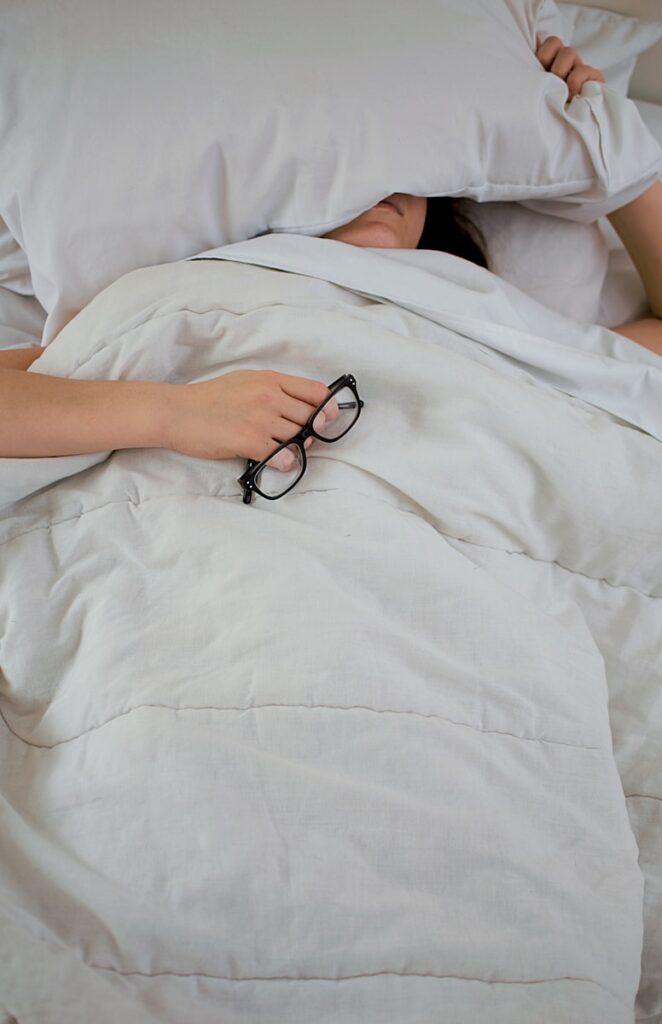
9. **Establish a Consistent Sleep-Wake Schedule**One of the most impactful habits you can cultivate for improving your sleep quality is establishing and adhering to a consistent sleep-wake schedule. This means going to bed at the same time and waking up at the same time every single day, without significant deviation, even on weekends. Such regularity acts as a powerful conditioner for your body, gently lulling it into a dependable rhythm of sleep and wakefulness.
Our bodies operate on a delicate daily circadian rhythm, an internal clock that governs our periods of alertness and sleepiness. Disrupting this rhythm by sleeping in on weekends or having erratic bedtimes can throw this natural cycle out of balance, making it harder to fall asleep and wake up feeling refreshed. As sleep experts emphasize, the less you deviate from your normal bed and wake-up times, the better your sleep will be, reinforcing healthy sleep patterns.
To effectively implement this strategy, be strict with your bedtime. When it’s time to go to bed, commit to it, resisting distractions like social media, television, or lingering work tasks. Similarly, when your alarm rings in the morning, get out of bed and start your day, regardless of how much sleep you feel you’ve had. This consistent reinforcement trains your brain to associate your bed with sleep and helps solidify your body’s natural timing for slumber.
Over time, your body will naturally align with this schedule, making it easier to fall asleep promptly and wake up feeling revitalized. This consistency provides a profound sense of grounding and regulation, ensuring that you’re not only getting sufficient sleep but also experiencing it at the optimal times for your physiological well-being. It’s a cornerstone of excellent sleep hygiene that yields remarkable long-term benefits for your energy and overall health.
Read more about: Why Walking Is Your Health’s Best Friend: 12 Proven Benefits and Practical Tips for a Longer, Healthier Life
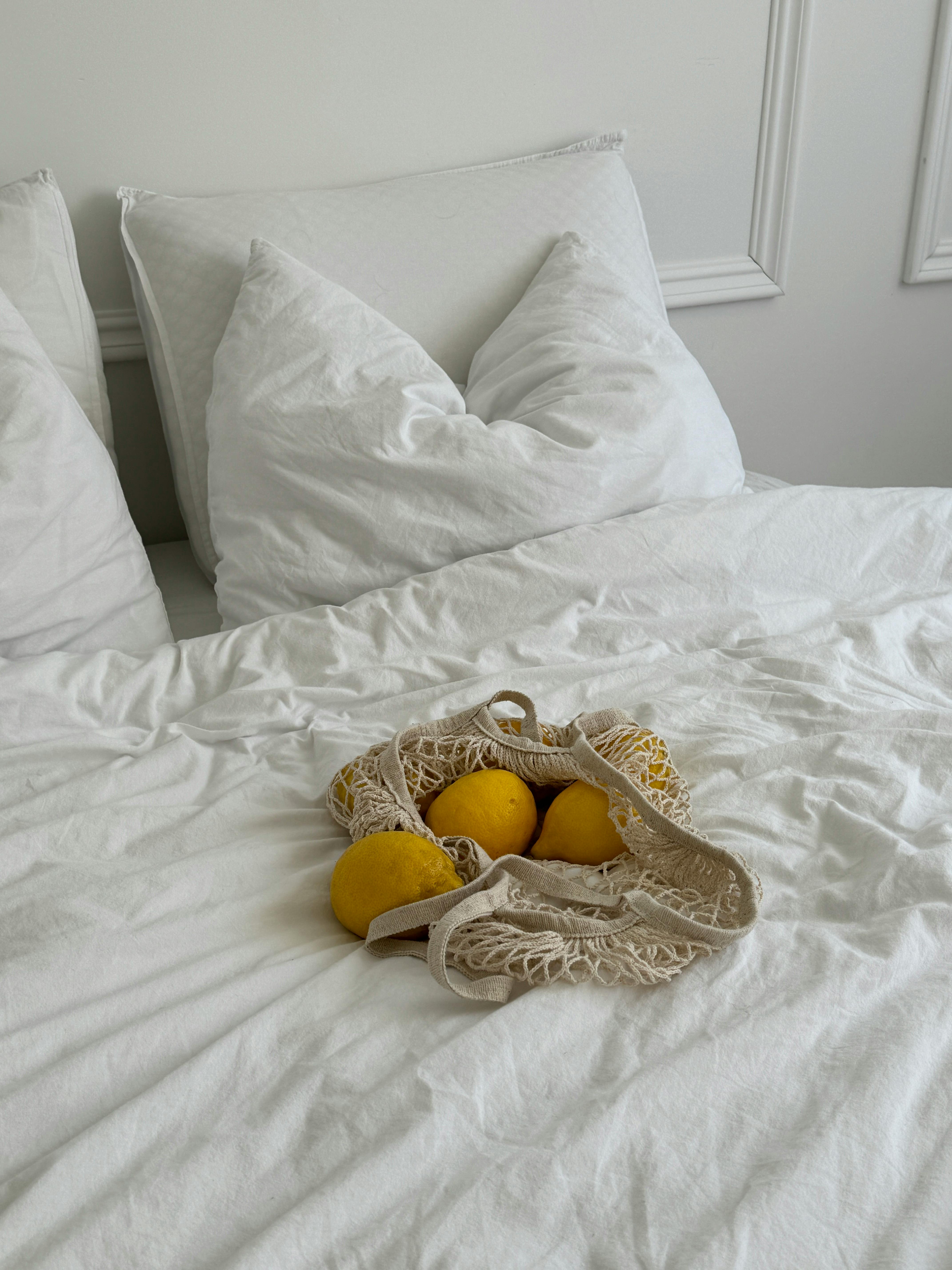
10. **Optimize Your Mattress and Pillows**While many elements contribute to sleep quality, the physical environment of your bed itself is paramount. The biggest factor in how well you’re sleeping is often your mattress. An old, uncomfortable, or unsupportive mattress can lead to a cascade of problems, including aches, pains, restless tossing and turning, and sleep that simply isn’t as restful and restorative as it should be. If you’re consistently waking up without feeling refreshed, it’s a clear signal to assess your mattress’s condition.
Several indicators suggest it might be time for a mattress upgrade. Noticeable lumps and bumps mean the mattress is uneven and needs to be replaced. If your mattress is visibly worn, tattered, or stained, it’s likely past its prime. Another telling sign is if you consistently experience better sleep at a hotel or a friend’s house compared to your own bed; this indicates your current mattress is failing to provide adequate support. Finally, age discrimination applies here: the typical lifespan of a mattress is no more than five to seven years, and exceeding this threshold often necessitates replacement.
Pillows, though often an afterthought, are equally critical for quality sleep. Even with a superb mattress and a tranquil room, a bad pillow can undermine your efforts by failing to provide proper neck and spine support. It’s recommended to replace your pillows annually, ensuring they offer the ergonomic support necessary to maintain healthy spinal alignment throughout the night. This prevents morning stiffness and promotes deeper relaxation.
Investing in a high-quality, supportive mattress and regularly replacing your pillows is a direct investment in your sleep health. These elements work in concert to create a comfortable foundation that minimizes physical discomfort, promotes proper posture, and ultimately facilitates the deep, undisturbed sleep your body needs for repair and rejuvenation. Prioritizing these physical aspects of your sleep environment can dramatically elevate your nocturnal experience.
Read more about: Conquering the Cold: 15 Top-Tier Camping Gear Essentials Rigorously Tested for Extreme Climates
11. **Cultivate a Sleep-Friendly Bedroom**Your bedroom should be a sanctuary dedicated to rest and intimacy, insulated from the distractions and stresses of daily life. The environment in which you sleep has a profound impact on the quality of your rest, as evidenced by how challenging it is to sleep in disruptive places like airports or hospitals. Creating a truly welcoming and conducive bedroom environment is a powerful step towards better sleep.
Temperature is a critical factor. For optimal comfort and sleep induction, your bedroom should ideally be kept cool, with a temperature between 65 and 67 degrees Fahrenheit (or 65 and 72 degrees, as some experts suggest). Turning down the thermostat, utilizing an air conditioner, or simply opening a window can help achieve this ideal range. For individuals experiencing hot flashes, keeping the room as cool as possible and wearing breathable fabrics like cotton to bed can make a significant difference.
Crucially, your bedroom should be a ‘sleep unplugged’ zone. This means keeping laptops, tablets, smartphones, and televisions out of the room entirely. These devices not only offer stimulating distractions that keep your mind active, but the blue light emitted from their screens actively disturbs sleep by suppressing melatonin production. Experts like Dr. Ilene M. Rosen emphasize that “The bed is for sleeping or .” If you’re not engaged in either, it’s best to be out of bed and in another room, physically separating your sleep space from sources of work or stress.
Finally, ensure your bedroom is an aesthetically pleasing and comforting space. Dim the lights in the evening, and maintain darkness throughout the night. If you need to get up, use a flashlight rather than bright overhead lights to minimize visual disruption, as even a brief exposure to bright light can interfere with your return to sleep. By carefully controlling these environmental factors – temperature, light, and digital presence – you transform your bedroom into a true haven for deep, restorative sleep, signaling to your mind and body that it is a place solely for unwinding and rejuvenation.
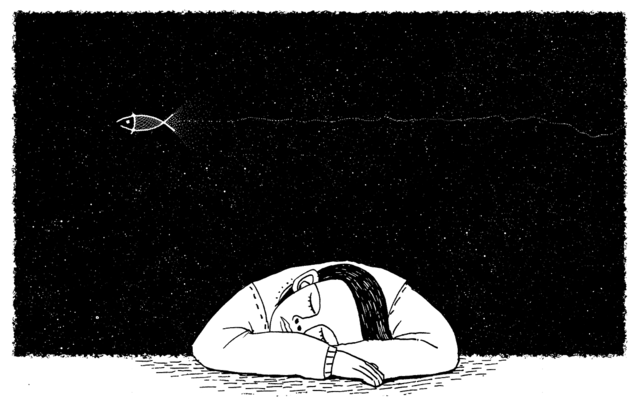
12. **Consider Natural Sleep Aids and Proper Exercise Timing**While good sleep hygiene forms the bedrock of restful nights, certain natural aids and mindful exercise timing can provide additional support, particularly for those looking to make adjustments without resorting to prescription medication. As Charlene Gamaldo, M.D., medical director of Johns Hopkins Center for Sleep, suggests, “It’s not always necessary to get a prescription for a sleep aid. There are natural ways to make adjustments to your sleeping habits.”
Incorporating specific natural beverages into your evening routine can be helpful. Dr. Gamaldo recommends warm milk, chamomile tea, and tart cherry juice. Warm milk has long been associated with chemicals that mimic the effects of tryptophan, a precursor to serotonin, which is involved in the sleep-wake transition. Chamomile tea contains flavonoids that may interact with benzodiazepine receptors in the brain, also playing a role in this transition, and importantly, it’s caffeine-free. Tart cherry juice is believed to support natural melatonin production, contributing to a healthy sleep cycle. While scientific proof for these drinks can vary, they pose no harm and can be a soothing part of your wind-down ritual.
Melatonin supplements offer another avenue. Melatonin is a hormone naturally released about four hours before you begin to feel sleepy, triggered by reduced light exposure. In our modern world, constant exposure to artificial light from screens can impede this natural release, making it difficult to fall asleep. Over-the-counter melatonin supplements can help bridge this gap. However, Dr. Gamaldo cautions about their unregulated nature by the FDA, advising: “Stick with one brand, and don’t buy it online from an unknown source,” to ensure consistent dosage and ingredients.
Physical activity is unequivocally beneficial for sleep; researchers widely acknowledge that moderate aerobic exercise boosts the amount of nourishing slow-wave (deep) sleep you achieve. However, timing is crucial. Exercise releases endorphins, which are stimulating chemicals, and can elevate your core body temperature—both signals for wakefulness. Dr. Michael Breus, a clinical psychologist, advises ending your exercise at least four hours before bedtime. This allows your body temperature to drop and stimulant effects to subside, preventing your workout from inadvertently interfering with your ability to fall asleep.
By strategically incorporating these natural aids and being mindful of when you exercise, you can further enhance your body’s readiness for sleep. These complementary strategies, when combined with consistent sleep hygiene practices, empower you to achieve a deeper, more restorative sleep, leading to improved overall health and daytime functioning.
—
Embarking on this journey to optimize your sleep is not about achieving perfection, but rather about establishing sustainable habits that genuinely support your well-being. It’s perfectly normal to have an off night; as many Olympians and athletes demonstrate, consistent good habits, not flawless sleep every single night, are what truly pay off over time. Think of your sleep quality in clusters, focusing on the overall trend rather than isolated instances.
Read more about: Unlock Your Peak Performance: 13 Common Diet Mistakes Professional Athletes Confidently Conquer
Remember, disturbed sleep is far more than a mere inconvenience that leaves you dragging the next day. Chronic poor sleep can profoundly impact your emotional and physical health, negatively affecting memory, concentration, and mood, while also boosting your risk for serious conditions like depression, obesity, type 2 diabetes, heart disease, and high blood pressure. By embracing these 12 simple, actionable steps, you’re not just aiming for more rest; you’re reclaiming a vital third of your life, unlocking enhanced performance, greater well-being, and a more vibrant, present you in every aspect of your daily existence.

